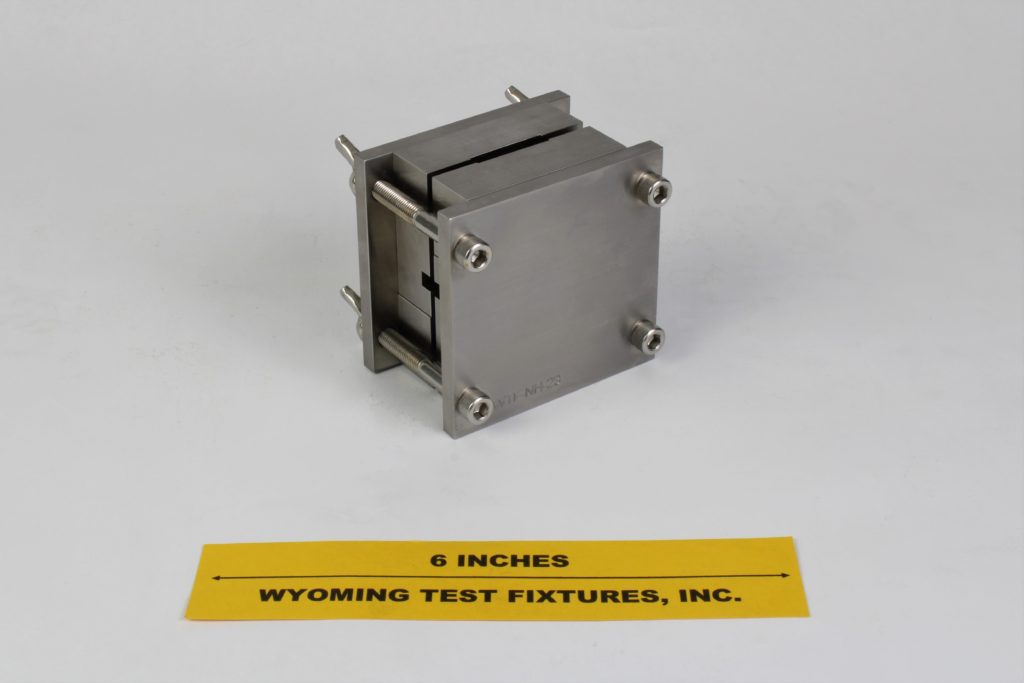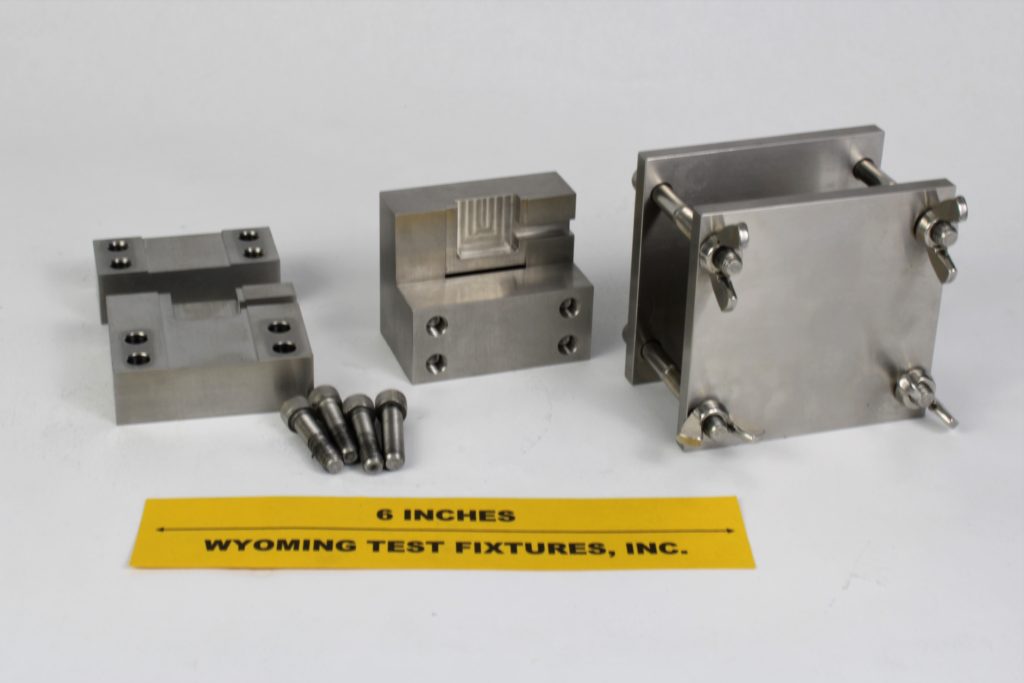Northrop Open-Hole Test Fixture (NAI-1504C)
Model No. WTF-NH (Stainless Steel)

Fig. 1: Assembled Northrop Open-Hole Compression Test Fixture with specimen installed.
The Northrop Open-Hole Compression Test Fixture was developed by the Northrop Corporation. It is described in Northrop Specification NAI-1504C (see Reference 1). The untabbed specimen is 3 in. long, 1 in. wide, and of various thicknesses depending upon the material and layup being tested. The Northrop Specification recommends thicknesses ranging from 0.125 in. to 0.250 in. in various cases. The standard specimen contains a 0.25 in. diameter hole in its center, although the fixture has also been successfully used to compression test specimens without holes, if end crushing does not occur.
This fixture is a viable competitor to the better known Boeing Open-Hole Compression Test Fixture, Wyoming Test Fixtures, Inc. Model WTF-OH (see Section C-1), which is an ASTM standard (see Reference 2). The Northrop method uses a much smaller specimen, which conserves test material, the Boeing version using a specimen four times as long and fifty percent wider, viz., 12 in. long and 1.50 in. wide.
The Northrop Open-Hole Compression test specimen is directly end-loaded in compression to failure in the fixture shown in Fig. 1, the specimen extending from one end of the fixture to the other and being flush with it. The fixture supports the test specimen essentially continuously along both faces, with cutouts being incorporated to accommodate strain gages and their lead wires (see Fig. 2 below of a partially assembled fixture). The specimen is constrained between the four main support blocks, which are bolted together in pairs, with a small (0.1") gap between the upper and lower pairs. This assembly is then lightly clamped between outer restraining plates held in place with wing nuts as shown, to maintain axial alignment of the assembly. The assembled fixture, with specimen installed, is placed between flat platens in a testing machine and compression loaded to failure.

Fig. 2: Partially assembled Northrop Open-Hole Compression Test Fixture.
Northrop Open-Hole Compression test results have typically not been compared directly with Boeing Open-Hole Compression test fixture results since the specimen widths are different, even though a 0.25 in. diameter hole is standard for both test methods. However, Reference 3 compares results for Northrop specimens of both 1 in. and 1.5 in. widths with Boeing fixture results for both shear and end loading, these results suggesting that the two test methods do give comparable results. Another discussion can be found in Reference 4.
Sources of Additional Information:
1) Northrop Specification NAI-1504C, "Open Hole Compression Test Method," Northrop Corporation, Hawthorne, California, May 1988.
2) ASTM Standard D6484-09 (2009), “Open-Hole Compressive Strength of Polymer Matrix Composite Laminates,” American Society for Testing and Materials, West Conshohocken, Pennsylvania (first issued in 1999).
3) S.L. Coguill and D.F. Adams, “A Comparison of Open-Hole Compression Fixtures by Experimental Evaluation,” Proceedings of the 45th International SAMPE Symposium and Exhibition, Long Beach, California, May 2000, pp. 1095-1105.
4) D.F. Adams, “Open Hole Compression Testing,” High Performance Composites, March 2005, pp. 12-13.

